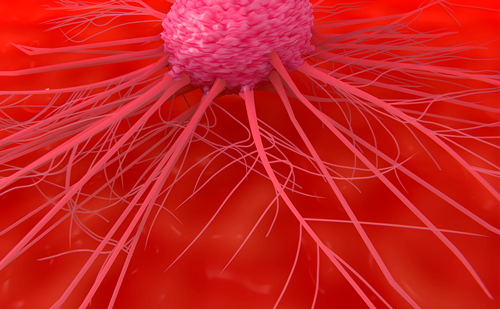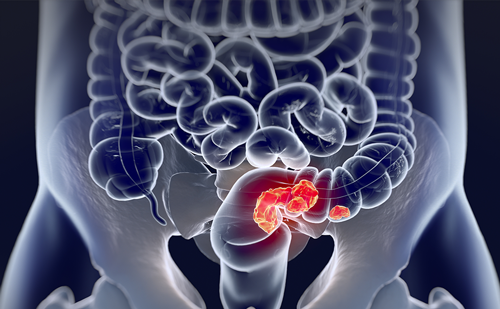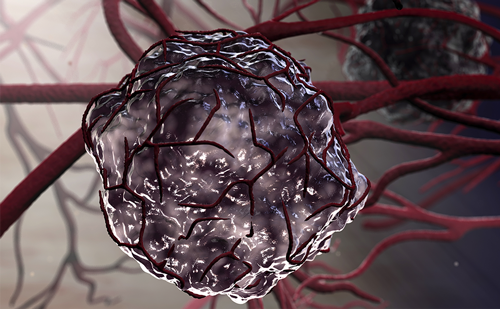Despite being considered a rare type of malignancy, constituting only 3% of all gastrointestinal cancers, the incidence of biliary tract cancers (BTCs) has been increasing worldwide in recent years, with about 20,000 new cases annually only in the USA.1–3 These cancers arise from the biliary epithelium of the small ducts in the periphery of the liver (intrahepatic) and the main ducts of the hilum (extrahepatic). Extrahepatic BTCs include gallbladder cancer and cancers of the common bile duct. Although extrahepatic cancers arise from similar epithelia, their aetiology can differ significantly due to their anatomical variations.4 Risk factors vary depending on the origin and include chronic viral infections (such as hepatitis B and C) as well as chronic inflammation of the liver and biliary tract (cirrhosis, fibrosis, diabetes, alcoholism, obesity, tobacco use, primary sclerosing cholangitis, hepatolithiasis and Caroli’s disease).3,4
A significant proportion of patients with BTCs are diagnosed at an advanced stage, rendering them ineligible for curative surgical interventions. According to a study analysing data from the SEER (Surveillance, Epidemiology, and End Results) database between 2000 and 2018, only 23.4% of patients with BTC underwent surgery alone, while 16.2% received both surgery and adjuvant treatment.5 This indicates that approximately 60.4% of patients did not undergo surgical procedures, highlighting the prevalence of advanced disease at diagnosis.5 Therefore, systemic therapies are often the only viable treatment options available. Gemcitabine and cisplatin (GemCis) chemotherapy has been the standard of care for advanced BTCs, despite its modest overall survival (OS) rate of less than 12 months and progression-free survival (PFS) of approximately 8 months.4,6,7 Over the years, different attempts have been made to improve these poor outcomes, such as the use of other gemcitabine-based regimens, including combinations with oxaliplatin, nab-paclitaxel, capecitabine and S-1.8–11
Additionally, more intense regimens with triplets were also explored. The phase III SWOG 1815 trial (A Phase III Randomized Trial of Gemcitabine, Cisplatin, and Nab-Paclitaxel Versus Gemcitabine and Cisplatin in Newly Diagnosed, Advanced Biliary Tract Cancers; ClinicalTrials.gov identifier: NCT03768414) compared a regimen of gemcitabine, cisplatin and nab-paclitaxel (GemCis–nab-paclitaxel) with the standard GemCis in patients with locally advanced unresectable or metastatic BTCs.12 The trial did not show a significant improvement in OS, with a median OS of 14 months in the GemCis–nab-paclitaxel arm compared with 12.7 months in the GemCis arm.12 As a result, this regimen was not widely adopted due to the negative phase III results. A phase II–III study assessed whether the combination of oxaliplatin, irinotecan and infusional fluorouracil (mFOLFIRINOX) could offer a significant advantage over the traditional GemCis regimen.13 After 21 months, the PRODIGE 38 AMEBICA study (Randomised Phase II/III Study, Assessing the Safety and Efficacy of Modified Folfirinox Versus Gemcis in Locally Advanced, Unresectable and/or Metastatic Bile Duct Tumours; ClinicalTrials.gov identifier: NCT02591030) found that the median overall survival (mOS) was 11.7 months (95% confidence interval [CI], 9.5–14.2) in the mFOLFIRINOX arm and 13.8 months (95% CI, 10.9–16.1) in the GemCis group.13
In conjunction with such unsuccessful efforts to improve chemotherapy regimens, the use of various targeted therapies in combination with chemotherapy was also attempted, including cediranib, erlotinib, panitumumab, cetuximab, ramucirumab and merestinib.14–18 Unfortunately, no substantial improvement in clinical outcomes was noticed. Due to these findings, GemCis has remained unchanged as the first-line standard of care for advanced BTCs for more than a decade, until the results from recent clinical trials involving immunotherapy emerged.
Rationale for immunotherapy in biliary tract cancer
The emergence of immunotherapy has revolutionized oncology treatment across many tumour types. Immunotherapy aims to enhance the patient’s immune system to recognize and attack tumour cells. Generally, the greater the genetic instability and neoantigen expression in a tumour, the higher the potential efficacy of the treatment. Studies have shown that certain subtypes, such as intrahepatic cholangiocarcinoma, often display high levels of genetic instability and neoantigen expression, which correlate with immune-related markers like programmed death-ligand 1 (PD-L1) and human leukocyte antigen class I antigens.19,20
Despite demonstrating some activity, early-phase trials with PD-L1 inhibitors in BTCs were disappointing.21–24 The main reason for this is likely that the tumour cells can develop mechanisms to avoid immune recognition and subsequent destruction, upregulating immune checkpoint molecules or even creating an immunosuppressive tumour microenvironment that inhibits the immune activity, thereby reducing the efficacy of immune checkpoint inhibitors.19,20
However, combining checkpoint inhibitors with chemotherapy has presented as a promising strategy to enhance therapeutic responses due to the immunomodulatory effects of chemotherapy, including the induction of tumour cell death, the release of tumour antigens, tumour immunogenicity, improved T-cell infiltration and promotion of a more favourable tumour environment. While these immunomodulatory effects have been demonstrated in preclinical studies, primarily in non-BTC models such as lung cancer, they provide a theoretical basis for similar strategies in BTCs.25,26 While immunotherapy alone has shown limited efficacy in BTCs due to tumour-specific immune evasion mechanisms, its combination with chemotherapy could potentially enhance treatment regimens, as demonstrated in the TOPAZ-1 trial (A Phase III Randomized, Double-blind Placebo Controlled, Multi-regional, International Study of Durvalumab in Combination with Gemcitabine plus Cisplatin Versus Placebo in Combination with Gemcitabine plus Cisplatin for Patients with First-line Advanced Biliary Tract Cancers; ClinicalTrials.gov identifier: NCT03875235) published in 2022.27 This phase III study evaluated durvalumab in combination with gemcitabine and cisplatin versus placebo plus GemCis in previously untreated patients with advanced BTC. The study reported significantly prolonged OS in the durvalumab plus gemcitabine and cisplatin arm.27 The findings of the TOPAZ-1 trial mark a significant development in the treatment of advanced BTCs, providing a new option for patients who previously faced limited therapeutic alternatives and poor prognosis. Therefore, this article aims to explore these data, along with recently updated results, and discuss how they can be applied to clinical practice and their potential to improve patient outcomes.
TOPAZ-1 trial
Durvalumab is a human monoclonal antibody that targets the PD-L1 protein, preventing its interaction with programmed cell death protein 1 (PD-1) and CD80 proteins. This action counteracts the tumour’s immune evasion strategies, thereby releasing the inhibition of immune responses. Its use in combination with tremelimumab was not encouraging, leading to the decision to proceed with a combination of gemcitabine plus cisplatin in a phase III, randomized, double-blind, placebo-controlled global study (TOPAZ-1).28,29 In this trial, patients with previously untreated, unresectable, locally advanced or metastatic BTC were randomly assigned to receive durvalumab in combination with GemCis or placebo in combination with the same chemotherapy regimen. The primary endpoint was OS, while the secondary endpoints included PFS, objective response rate (ORR), duration of response and disease control rate and efficacy based on PD-L1 expression. Durvalumab (1,500 mg) or placebo was initially administered every 3 weeks for up to eight cycles in combination with chemotherapy. The chemotherapy in both arms consisted of the combination of gemcitabine (1,000 mg/m2) and cisplatin (25 mg/m2), both administered on days 1 and 8 of each 21-day cycle. Patients subsequently received maintenance therapy with either durvalumab (1,500 mg now every 4 weeks) or placebo until clinical or imaging (per Response Evaluation Criteria in Solid Tumors [RECIST] v1.1) evidence of disease progression or unacceptable toxicity.30
Oh et al. initially published the results of the TOPAZ-1 trial in 2022, after randomizing 685 patients from 105 sites across 17 countries to receive either durvalumab (n=341) or placebo (n=344), with a median follow-up of 17 months (data cut-off: 11 August 2021).27 Patients with intrahepatic cholangiocarcinoma (56%), extrahepatic cholangiocarcinoma (19%) and gallbladder cancer (25%) were included. The combination of durvalumab plus chemotherapy improved OS (median 12.8 versus 11.5 months; hazard ratio [HR], 0.80; 95% CI, 0.66–0.97; 2-year OS rate 25 versus 10%), PFS (median 7.2 versus 5.7 months; HR, 0.75; 95% CI, 0.63–0.89) and ORR (27 versus 19%). The proportion of ongoing responses lasting 1 year or longer for durvalumab versus placebo was 26 and 15%, respectively.
OS benefits were seen across clinically relevant subgroups including those with intrahepatic cholangiocarcinoma (HR, 0.76; 95% CI, 0.58–0.98), extrahepatic cholangiocarcinoma (HR, 0.76), gallbladder cancer (HR, 0.94) and PD-L1 expression: total area positivity ≥1 (HR, 0.79; 95% CI, 0.61–1.00). Interestingly, Asian patients appeared to benefit more from durvalumab (HR, 0.67; 95% CI, 0.54–0.83) than non-Asian patients (HR, 0.88; 95% CI, 0.69–1.14).
Three-year updated survival data
Updated results from the TOPAZ-1 trial have been recently published, and 3-year survival has been recently presented.29,31 In this long-term follow-up analysis, OS and serious adverse events were assessed after approximately 26 months (data cut-off: 23 October 2023) from the primary analysis and approximately 36 months from the date of the last participant being randomized, with 89% overall OS maturity.
With a median follow-up of 41 months, the OS benefit with the addition of durvalumab to GemCis improved versus previously published results (HR, 0.74; 95% CI, 0.63–0.87 versus HR, 0.80; 95% CI, 0.66–0.97).27,28 Durvalumab plus GemCis continued to show a durable survival benefit versus placebo plus GemCis with a 3-year follow-up, which is the longest follow-up reported in this setting. The OS rate (95% CI) of patients alive at 36 months was 14.6% (11.0–18.6) in the durvalumab plus GemCis arm and 6.9% (4.5–10.0) in the placebo plus GemCis arm.
Toxicity, quality of life and patient-reported outcomes
Adding durvalumab to GemCis improved OS and PFS, but it is important to address how the addition of a third drug impacts toxicity and quality of life.31 Adverse events of any cause or grade occurred in 99% of participants in both groups, and they were mainly related to the chemotherapy (anaemia, nausea and neutropaenia). The proportion of patients experiencing any grade 3 or 4 adverse event (74 versus 75%) or any treatment-related adverse event (93 versus 90%) was generally similar across both treatment groups. The most frequent grade 3 or 4 treatment-related adverse events across both treatment groups included decreased neutrophil count, anaemia and neutropaenia. The rate of immune-mediated adverse events was higher in the durvalumab group than in the placebo group (14 versus 5%). However, the grade 3 or 4 immune-mediated adverse events occurred at rates of only 2 and 1%, respectively (Table 1).28,31
Table 1: Adverse events reported in the TOPAZ-1 trial28
|
Adverse events |
Intervention arm Durvalumab plus GemCis (n=338) |
Control arm Placebo plus GemCis (n=342) |
|
Any grade |
336 (99.4) |
338 (98.8) |
|
Anaemia |
163 (48.2) |
153 (44.7) |
|
Nausea |
136 (40.2) |
117 (34.2) |
|
Constipation |
108 (32.0) |
99 (28.9) |
|
Neutropaenia |
107 (31.7) |
102 (29.8) |
|
Decreased neutrophil count |
91 (26.9) |
106 (31.0) |
|
Fatigue |
91 (26.9) |
90 (26.3) |
|
Grade 3 or 4 |
256 (75.7) |
266 (77.8) |
|
Decreased neutrophil count |
70 (20.7) |
87 (25.4) |
|
Neutropaenia |
65 (19.2) |
69 (20.2) |
|
Anaemia |
64 (18.9) |
64 (18.7) |
|
Decreased platelet count |
27 (8.0) |
26 (7.6) |
|
Decreased white blood cell count |
14 (4.1) |
20 (5.8) |
|
Thrombocytopaenia |
12 (3.6) |
18 (5.3) |
|
Immune-mediated |
|
|
|
Any grade |
43 (12.7) |
16 (4.7) |
|
Hypothyroidism |
20 (5.9) |
5 (1.5) |
|
Dermatitis/rash |
12 (3.6) |
1 (0.3) |
|
Hepatic events |
4 (1.2) |
2 (0.6) |
|
Adrenal insufficiency |
4 (1.2) |
1 (0.3) |
|
Grade 3 or 4 |
8 (2.4) |
5 (1.5) |
|
Dermatitis/rash |
3 (0.9) |
0 |
|
Hepatic events |
2 (0.6) |
1 (0.3) |
|
Pneumonitis |
1 (0.3) |
1 (0.3) |
|
Diarrhoea/colitis |
1 (0.3) |
1 (0.3) |
Data taken from the TOPAZ-1 trial.28
GemCis = gemcitabine and cisplatin.
Burris et al. recently reported the patient-reported outcome (PRO) analysis from the phase III TOPAZ-1 trial.32 PROs were evaluated for all participants who completed the 30-item Quality of Life questionnaire (QLQ-C30) from the European Organisation for Research and Treatment of Cancer and the 21-item Cholangiocarcinoma and Gallbladder Cancer Quality of Life Module (QLQ-BIL21).32–34 The time to deterioration in PROs was defined as the duration from random assignment to a decrease of 10 or more points.
Regarding global health status/quality of life on the QLQ-C30, as well as functional and symptom scales on the QLC-C30 and QLQ-BIL21, no differences were observed in the time to deterioration or in the adjusted mean changes in scores from baseline between the durvalumab group and the placebo group. The median time to deterioration of global health status/quality of life was 7.4 months (95% CI, 5.6–8.9 months) in the durvalumab group compared with 6.7 months (95% CI, 5.6–7.9 months) in the placebo group (HR, 0.87; 95% CI, 0.69–1.12). Adjusted mean changes from baseline scores were 1.23 (95% CI, –0.71 to 3.16) in the durvalumab group versus 0.35 (95% CI, –1.63 to 2.32) in the placebo group. Therefore, the inclusion of durvalumab with GemCis did not negatively impact PROs, indicating that this combination is a tolerable treatment regimen for patients with advanced BTC.32
TOPAZ-1 versus KEYNOTE-966
Another checkpoint inhibitor, pembrolizumab (an anti-PD-1 antibody), is approved for use in combination with chemotherapy as a first-line treatment for advanced BTC based on the results of the KEYNOTE-966 trial (A Phase 3 Randomized, Double Blind Study of Pembrolizumab plus Gemcitabine/Cisplatin Versus Placebo plus Gemcitabine/Cisplatin as First-line Therapy in Participants with Advanced and/or Unresectable Biliary Tract Carcinoma; ClinicalTrials.gov identifier: NCT04003636), which shares some similarities with the TOPAZ-1 study.35 In this study, patients with advanced BTC who had not received prior treatment were assigned to receive a combination of gemcitabine (1,000 mg/m²) and cisplatin (25 mg/m²) on days 1 and 8 of a 21-day cycle, along with either pembrolizumab (200 mg) or a placebo every 3 weeks. A notable difference in study design is that in TOPAZ-1, chemotherapy was limited to eight cycles, as previously mentioned. In KEYNOTE-966, however, the continuation of gemcitabine beyond eight cycles was permitted at the treating physician’s discretion, alongside either pembrolizumab or placebo. This study met its primary endpoint by demonstrating improved OS, with patients in the pembrolizumab group showing an mOS of 12.7 versus 10.9 months in the placebo group (HR, 0.83; 95% CI, 0.72–0.95; p=0.0034).35 The ORR of 29% was similar in both arms. Although cross-trial comparisons should be made cautiously, the benefit observed was similar to that in TOPAZ-1, suggesting that continuing chemotherapy beyond eight cycles may not provide additional OS benefit.
Other important differences between these trials can also be noted (Table 2).28,35 The KEYNOTE-966 trial included a larger participant pool (1,069 compared with 685 in TOPAZ-1) and had a greater proportion of participants from outside Asia (55 versus 45%). Additionally, the KEYNOTE-966 and TOPAZ-1 trials showed differences in the shape of their OS curves and the timing at which they diverged. In KEYNOTE-966, the curves began to favour the pembrolizumab group around the second month after randomization, with a relatively consistent separation throughout the study. In contrast, in TOPAZ-1, the curves initially overlapped, with the durvalumab group not exhibiting a survival benefit until around 6 months post-randomization. With no head-to-head comparison between these two regimens and no biomarkers to guide better treatment selection, both are considered reasonable options for first-line systemic therapy.
Table 2: Main results from the TOPAZ-1 and KEYNOTE-966 phase III trials28,35
|
Outcome characteristics |
Study design TOPAZ-1 |
Study design KEYNOTE-966 |
||
|
Durva + GemCis (n=341) |
GemCis (n=344) |
Pembro + GemCis (n=533) |
GemCis (n=536) |
|
|
Asian patients (%) |
52.2 |
57 |
45 |
46 |
|
mOS (months) |
12.9 |
11.3 |
12.7 |
10.9 |
|
mPFS (months) |
7.2 |
5.7 |
6.5 |
5.6 |
|
ORR (%) |
26.7 |
18.7 |
29 |
29 |
|
DCR (%) |
85.3 |
82.6 |
75 |
76 |
|
AE grade 3–4 (%) |
74 |
75.1 |
79 |
75 |
|
Im-AE grade 3–4 (%) |
2.4 |
– |
7 |
– |
AE = adverse events; DCR = disease control rate; Durva = durvalumab; GemCis = gemcitabine and cisplatin; Im-AE = immune-mediated adverse events; mOS = median overall survival; mPFS = median progression-free survival; ORR = objective response rate; Pembro = pembrolizumab.
Potential biomarkers for durvalumab
Emerging evidence suggests that certain biomarkers may help predict responsiveness to immunotherapy in BTC, although these markers appear in a minority of cases. For instance, tumours with high microsatellite instability (MSI-H) or high tumour mutation burden (TMB-H) tend to respond better to immunotherapy; however, these characteristics are uncommon in BTC, with MSI-H or deficient mismatch repair observed in only 2–2.5% of cases and TMB-H in fewer than 5%.36 PD-L1 expression is somewhat more frequent, detected in approximately 25% of BTC tumours.36 In the TOPAZ-1 trial, patients with BTC with PD-L1 tumour area positivity ≥1% who received durvalumab showed numerically longer survival compared with those receiving placebo and chemotherapy, although this difference did not reach statistical significance (HR, 0.79; 95% CI, 0.61–1.00).27 Similarly, in the KEYNOTE-966 trial, patients with a PD-L1 combined positive score ≥1 treated with pembrolizumab demonstrated a trend towards improved OS, but statistical significance was not achieved (HR, 0.85; 95% CI, 0.72–1.00).35
Additional research has examined genetic alterations as potential predictors. A study by Rimini et al. clustered patients with BTC based on molecular and genomic changes, identifying three distinct genetic clusters in patients with BTC treated with this regimen.37 The group with alterations across multiple pathways – including DNA damage control, chromatin modification, receptor tyrosine kinase/rat sarcoma virus (RTK/RAS), cell cycle apoptosis, tumour protein p53 (TP53) and phosphoinositide 3-kinase (PI3K) – achieved an ORR of up to 50%, surpassing responses in groups with chromatin modification pathway mutations alone or the group with alterations in RTK/RAS and cell cycle apoptosis pathways. Notably, no single genetic alteration has consistently predicted an enhanced benefit from adding durvalumab, a finding consistent with biomarker analyses from the TOPAZ-1 trial and real-world patient cohorts.38,39
Currently, the use of biomarkers to guide immunotherapy treatment decisions in advanced BTC is limited compared with other cancer types. The combination of cisplatin, gemcitabine and durvalumab is approved for use irrespective of biomarker presence, enabling broader applicability across patient populations without requiring specific molecular profiling.36,37
Future insights and directions
The advancement of BTC treatment is marked by significant advancements in targeted therapies.40 Personalized treatment approaches based on molecular profiling are gaining traction. These approaches could significantly improve treatment outcomes by identifying patients most likely to benefit from specific combinations of therapies. Recent advancements are focusing on targeted therapies aimed at specific molecular alterations in BTC, such as isocitrate dehydrogenase 1 (IDH1) and isocitrate dehydrogenase 2 (IDH2) mutations, fibroblast growth factor receptor 2 fusions and human epidermal growth factor receptor 2 (HER2) overexpression.40
For instance, various targeted inhibitors, including ivosidenib (IDH1/IDH2 inhibitors), pemigatinib and futibatinib (FGFR2 inhibitors), and HER2 inhibitors, have been studied to address these specific mutations in BTC.40 Furthermore, integrating immunotherapy, particularly durvalumab, with these targeted inhibitors has shown promising potential.40 These combinations are expected to provide a more robust approach by targeting multiple pathways involved in tumour growth and immune evasion, which are crucial for overcoming the inherent resistance of BTC. Continued research and clinical trials are crucial for optimizing these therapies and advancing personalized treatment approaches for BTC. Table 3 summarizes the ongoing clinical trials of immunotherapy in advanced BTC.41–53
Table 3: Ongoing clinical trials of durvalumab in advanced biliary tract cancer41–53
|
Trial |
Treatment |
Target/mechanism
|
Setting |
Phase |
|
NCT0429800841 |
AZD6738 + durvalumab |
Anti-ATR kinase and anti-PD-L1 |
Refractory BTC, second line |
II |
|
NCT0577148042 |
Durvalumab + gemcitabine-based chemotherapy |
Anti-PD-L1 and chemotherapy |
Advanced BTC, first line |
IIIb |
|
NCT0347357443 |
Durvalumab + tremelimumab + gemcitabine ± cisplatin versus gemcitabine + cisplatin |
Anti-PD-L1, anti-CTLA-4 and chemotherapy |
Untreated BTC, first line |
II |
|
NCT0304686244 |
Durvalumab + tremelimumab + gemcitabine + cisplatin |
Anti-PD-L1, anti-CTLA-4 and chemotherapy |
Chemotherapy-naive, unresectable or recurrent BTC, first line |
II |
|
NCT0370448045 |
Durvalumab + tremelimumab ± paclitaxel |
Anti-PD-L1, anti-CTLA-4 and chemotherapy |
Advanced BTC, second line |
II |
|
NCT0325776146 |
Durvalumab + guadecitabine |
Anti-PD-L1 and chemotherapy |
Unresectable, refractory BTC, second line |
Ib |
|
NCT0478119247 |
Durvalumab + regorafenib |
Anti-PD-L1 and TKI |
Chemorefractory advanced BTC, second line |
I/II |
|
NCT0522297148 |
Olaparib ± durvalumab |
Anti-PARP and anti-PD-L1 |
DDR gene-mutated advanced BTC, second line |
II |
|
NCT0399183249 |
Durvalumab + olaparib |
Anti-PD-L1 and anti-PARP |
Selected solid tumours, including BTC, with IDH mutations, first line |
II |
|
NCT0429802150 |
Durvalumab + ceralasertib versus olaparib + ceralasertib |
Anti-PD-L1, anti-ATR and anti-PARP |
Advanced BTC, second line |
II |
|
NCT0348210251 |
Durvalumab + tremelimumab + radiation |
Anti-PD-L1, anti-CTLA-4 and local |
Locally advanced, unresectable or metastatic HCC or BTC, second line |
II |
|
NCT0423863752 |
Durvalumab + tremelimumab + Y90 SIRT |
Anti-PD-L1, anti-CTLA-4 and local |
Intrahepatic BTC, second line |
II |
|
NCT0393783053 |
Durvalumab + bevacizumab + tremelimumab + TACE |
Local, anti-VEGF, anti-PD-L1 and anti-CTLA-4 |
HCC or BTC, second line |
II |
ATR = ataxia telangiectasia and Rad3-related;BTC = biliary tract cancer;CTLA-4 = cytotoxic T-lymphocyte-associated protein 4;DDR = DNA damage response; HCC = hepatocellular carcinoma; IDH = isocitrate dehydrogenase; PARP = poly ADP-ribose polymerase;PD-L1 = programmed death-ligand 1;TACE = transarterial chemoembolization; TKI = tyrosine kinase inhibitor; VEGF = vascular endothelial growth factor; Y90 SIRT = yttrium-90 selective internal radiation therapy.
Conclusion
Since its establishment in the ABC-02 study (Gemcitabine, Alone or in Combination with Cisplatin, in Patients with Advanced or Metastatic Cholangiocarcinomas and Other Biliary Tract Tumors: A Multicentre, Randomized Phase III Study; ClinicalTrials.gov identifier: NCT00262769), GemCis has been the standard first-line treatment for advanced BTC.6 Over the years, numerous systemic therapies have been evaluated for this condition, but until recently, none demonstrated superiority over chemotherapy alone. In 2022, the phase III TOPAZ-1 study reached its primary endpoint in a preplanned interim analysis, revealing a significant improvement in OS when comparing durvalumab plus GemCis with placebo plus GemCis in participants with advanced BTC, being the first positive phase III trial in 12 years in the first-line setting.28 Updated analysis of the TOPAZ-1 study showed a sustained OS benefit, with more than twice as many participants estimated to be alive at 24 and 36 months with durvalumab compared with placebo.29 As of the updated data cut-off, durvalumab plus gemcitabine–cisplatin continued to be well tolerated, with no new safety signals observed. These findings support the favourable benefit–risk profile of durvalumab plus GemCis, establishing it as a new standard of care for previously untreated, advanced BTC.












